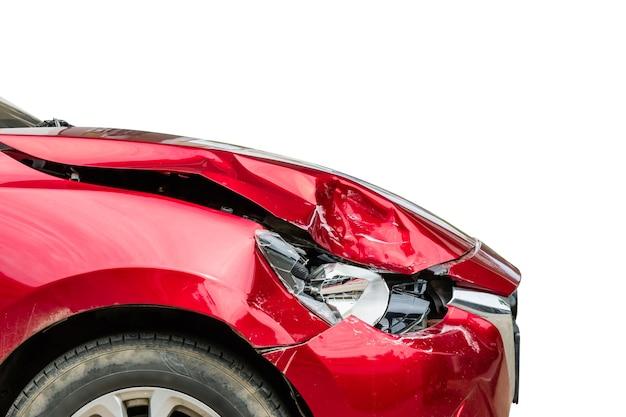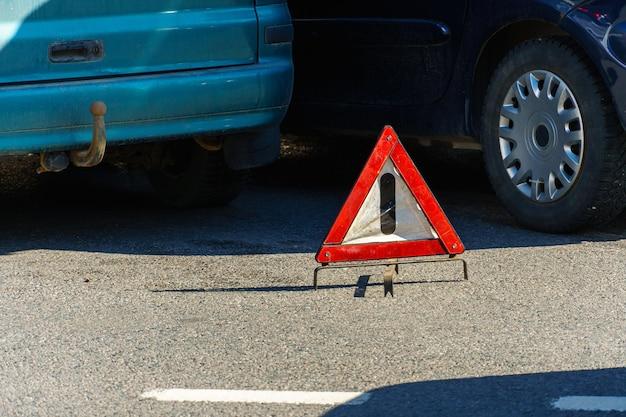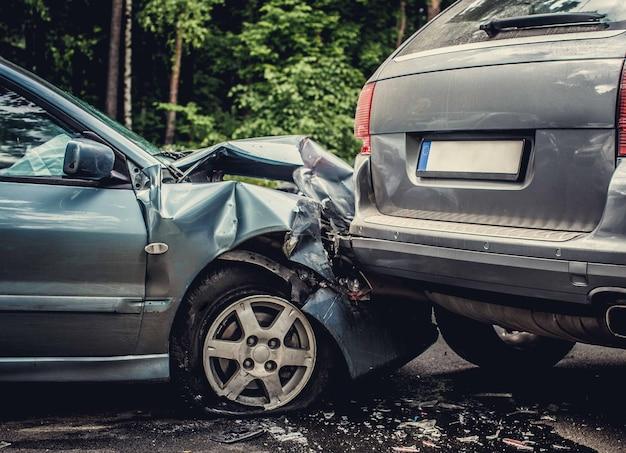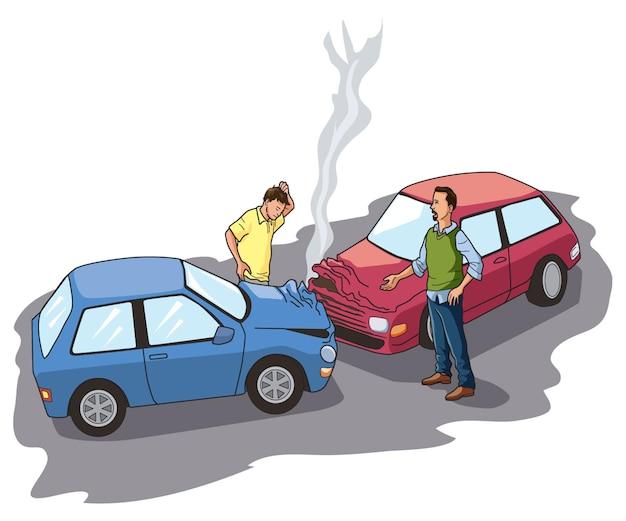Have you ever wondered what defines a major car accident? We are here to shed some light on this topic and provide you with a comprehensive understanding. Whether you’re curious about the difference between major and minor accidents, the types of accidents that can occur, or the severity of injuries involved, we’ve got you covered. In this blog post, we’ll explore various examples of major car accidents, compare them to minor accidents, and discuss the impact they can have on individuals involved. So, let’s dive right in and uncover the secrets behind major car accidents!
What is Considered a Major Car Accident
Severity of Accidents: From Fender Benders to Head-On Collisions
If you’ve ever been in a car accident or have witnessed one, you know that they come in all shapes and sizes. From minor fender benders to catastrophic collisions, the severity of car accidents can vary greatly. But what exactly constitutes a major car accident? Let’s dive into the different types of accidents and their impact levels.
1. Fender Benders: The “Oops, I Bumped Your Car” Moments
Probably the most common type of car accident, a fender bender refers to a low-impact collision. These are the “oops, I bumped your car” moments that happen when you misjudge the distance, take your eyes off the road for a split second, or get distracted by something shiny. Fender benders usually result in minor damage to the vehicles involved, such as scratches or dents, but rarely lead to serious injuries.
2. Rear-End Collisions: The Unwanted Closeness on the Road
You’re minding your own business, waiting for the traffic light to turn green, when suddenly you feel a jolt from behind. Yep, you’ve just experienced a rear-end collision. These accidents occur when the following vehicle fails to maintain a safe distance and ends up “kissing” your car. While rear-end collisions can range from minor bumps to more serious wrecks, they often result in whiplash injuries, especially for the unsuspecting driver in front.
3. T-Bone Accidents: When You Cross Paths at an Intersection
Picture this: you’re cruising through an intersection when, out of nowhere, another car slams into your vehicle’s side, forming the shape of a “T.” This is what’s known as a T-bone accident. These crashes often happen when someone runs a red light or fails to yield the right of way. T-bone accidents can be quite severe, as the force of the impact is concentrated on the side of the vehicle that’s hit. Injuries can range from broken bones to traumatic brain injuries, depending on the speed and angle of the collision.
4. Head-On Collisions: The Ultimate Game of Chicken
Now, brace yourself for the most terrifying type of car accident: the head-on collision. It’s like someone decided to play a game of chicken, and you ended up as an unwilling participant. Head-on collisions occur when two vehicles coming from opposite directions collide front to front. The sheer force involved in these accidents often leads to catastrophic injuries or even fatalities. Surviving a head-on collision is nothing short of a miracle.
So, there you have it — a breakdown of various car accidents and their degrees of severity. Remember, staying alert, following traffic rules, and maintaining a safe distance can greatly reduce the chances of being involved in a major car accident. Stay safe on the roads!
Major Accident Examples
If you’ve ever wondered what qualifies as a major car accident, look no further. Here are a few real-life examples that will give you a sense of what constitutes a major accident.
High-Speed Collisions
One of the most obvious examples of a major car accident is a high-speed collision. When two or more vehicles crash into each other at high speeds, the damage can be devastating. These types of accidents often result in severe injuries or even fatalities. It’s important to always abide by the speed limits and drive responsibly to reduce the risk of being involved in such an accident.
Rollover Accidents
Rollover accidents are another type of major car accident. These accidents occur when a vehicle flips over onto its roof or side. They are particularly dangerous because they often lead to serious injuries, especially if the occupants are not wearing seat belts. Rollover accidents can happen for various reasons, including sharp turns, overcorrection, or collision with another vehicle or obstacle.
Multi-Vehicle Pileups
Multi-vehicle pileups are every driver’s worst nightmare. These accidents involve multiple vehicles colliding with each other in a chain reaction. Often occurring on highways or freeways, these pileups can involve dozens of vehicles and result in significant damage, injuries, and sometimes even fatalities. Poor visibility due to weather conditions or distracted driving can contribute to these types of accidents.
Pedestrian or Cyclist Accidents
Accidents involving pedestrians or cyclists are considered major accidents due to the vulnerability of those involved. When a motor vehicle collides with a pedestrian or cyclist, the consequences can be catastrophic. These accidents can occur at intersections, crosswalks, or while cyclists are sharing the road with motor vehicles. It’s crucial for both drivers and pedestrians/cyclists to be attentive, follow traffic rules, and prioritize safety.
Drunk Driving Accidents
Drunk driving accidents are not only major accidents but also entirely avoidable. When someone chooses to get behind the wheel while under the influence of alcohol or drugs, they are putting themselves and others at great risk. These accidents often have devastating consequences and can lead to permanent disabilities or loss of life. Always designate a sober driver or utilize alternative transportation to prevent accidents caused by impaired driving.
Now that you have a better understanding of what is considered a major car accident, it’s essential to do your part to stay safe on the road. Remember, accidents can happen in a split second, so always drive defensively, follow traffic rules, and never underestimate the importance of responsible driving. Stay alert, buckle up, and be considerate of others to reduce the risk of being involved in a major accident.
Minor Accidents Examples
Fender Benders: When Misadventures Scratch the Surface
Fender benders are the playful wink from Lady Luck when it comes to minor car accidents. These encounters usually involve light impacts that, thankfully, don’t result in any serious injuries. Think of them as the gentle tap on the shoulder, reminding us to stay vigilant on the road.
So, what exactly constitutes a fender bender? Picture this: you’re pulling out of a parking spot, carefully checking your surroundings, when suddenly, a faint thud resonates through your car. You look behind you and find yourself sandwiched between another vehicle and a pillar. Annoying, right? Well, in the grand scale of car accidents, this quirky incident falls under the category of “minor.”
Rear-End Collisions: The Unfortunate Bump from Behind
Ah, the notorious rear-end collision—one of the most common types of minor accidents. These mishaps occur when one vehicle fails to maintain a safe distance and ends up intimately acquainted with the backside of another. It’s like getting caught off-guard when someone playfully tickles you from behind, but with less laughter and more paperwork.
Imagine this hair-raising situation: you’re patiently waiting for the green light, minding your own business, when suddenly, without any warning, boom! You’re jolted forward as another driver smacks into your rear bumper. Luckily, since these accidents generally involve low speeds, the injuries are usually minor, and vehicles can often walk away with nothing more than a few dents and bruises.
Side-Swipes: Sideways Dancing on the Road
If you’ve ever had an unexpected encounter with another vehicle, leaving you bewildered and contemplating life’s mysteries, you’ve probably experienced a side-swipe. This dance of misjudgment occurs when two parallel vehicles decide to tango a little too closely, resulting in a minor, but nevertheless inconvenient, accident.
Close your eyes and picture this: you’re cruising down a narrow street, jamming to your favorite tunes, when suddenly, your car’s right side becomes unexpectedly acquainted with the left side of another vehicle. It’s like a spontaneous tango, performed without any warning or choreography. Thankfully, side-swipes are typically more embarrassing than dangerous since they often happen at relatively low speeds.
Parking Lot Pranks: The Unwanted Dings and Scratches
Ah, parking lots—the playgrounds where minor accidents often unfold. These spaces, filled with joy and frustration in equal measure, set the stage for encounters with rogue shopping carts, irritable poles, and inattentive drivers.
Imagine this unfortunate scenario: you’ve just finished your shopping spree and eagerly approach your car, only to discover a fresh ding and an extravagant scratch on your once pristine vehicle. You’re left scratching your head, wondering how such a mishap could have occurred. Although these accidents can be quite costly and infuriating, they generally fall into the realm of minor, as they typically involve little more than cosmetic damage.
Now that we’ve explored various examples of minor car accidents, it’s important to remember that even though these incidents may be classified as “minor,” they can still be frustrating, time-consuming, and inconvenient. So, whether you find yourself in a fender bender or have a dance-off with another vehicle in a parking lot, approach these situations with patience, understanding, and maybe a touch of humor. After all, a little laughter can help you stay sane until it’s time to buff out those scratches or replace that dented fender.
Minor vs. Major Car Accidents
Understanding the Difference
When it comes to car accidents, they can vary in severity. Some are minor fender benders, while others are major collisions that leave a lasting impact. Let’s delve into the differences between minor and major car accidents, so you know when to consider the situation more serious.
Minor Car Accidents: No Harm, No Foul
What are Minor Car Accidents?
Minor car accidents usually involve low impact collisions that result in minimal damage. These incidents often occur at slower speeds and can include situations like rear-end collisions, parking lot mishaps, or a minor sideswipe. In most cases, they don’t cause significant injuries to the parties involved.
Common Characteristics
In minor car accidents, the vehicles typically sustain cosmetic damage, such as scratches, dents, or small punctures. The impact may be noticeable but not severe enough to render the car undrivable. Additionally, the individuals involved may experience minor whiplash or sprains, which often resolve with time and minimal medical intervention.
What to Do after a Minor Car Accident
If you find yourself in a minor car accident, remember to stay calm and assess the situation. Ensure your safety and the safety of others involved. Once you’ve done that, you can exchange information, document the scene, and contact your insurance provider to report the incident. Though minor accidents can be annoying, they are generally less complex and typically resolved more quickly.
Major Car Accidents: When Things Get Serious
What are Major Car Accidents?
Major car accidents involve high-speed collisions, multiple vehicles, or serious injuries. These accidents can range from rollovers and head-on collisions to accidents with fatal outcomes. They often result in significant vehicle damage and require immediate medical attention for those involved.
Common Characteristics
In major car accidents, the vehicles may sustain extensive damage, including crumpled frames, shattered windows, or total write-offs. The individuals involved may suffer from severe injuries such as broken bones, spinal cord injuries, or internal bleeding. The road may also be blocked, requiring emergency services to attend the scene.
Responding to a Major Car Accident
If you witness or are involved in a major car accident, prioritize safety and prompt medical assistance. Call emergency services immediately and provide them with your location and a detailed description of the incident. Remember, only intervene if it is safe to do so and if you have adequate training.
It’s crucial to understand the difference between minor and major car accidents. While minor accidents may cause some inconvenience, major accidents can have life-altering consequences. By being aware of the varying degrees of severity, we can better respond to these situations and take appropriate action when needed. Stay safe on the roads and drive responsibly!
Serious Car Accident Injuries
Car accidents can have varying degrees of severity, but some injuries are considered more serious than others. Let’s take a closer look at the types of injuries that can result from a major car accident.
Head and Brain Injuries
Head injuries can occur when a person’s head strikes a hard surface during a car accident. These injuries can range from minor concussions to more severe traumatic brain injuries (TBIs). Symptoms may include headaches, dizziness, memory loss, and difficulty concentrating. In some cases, these injuries can have long-lasting effects on a person’s cognitive functions.
Spinal Cord Injuries
The impact of a car accident can cause damage to the spinal cord, resulting in spinal cord injuries. These injuries can lead to partial or complete paralysis, depending on the location and severity of the damage. They can significantly impact a person’s mobility and quality of life.
Internal Organ Damage
In a major car accident, the force of impact can cause internal injuries. These injuries may affect organs such as the liver, spleen, kidneys, or lungs. Symptoms may not always be immediately evident, so it’s essential to seek medical attention after an accident, even if you don’t notice any external injuries.
Fractures and Broken Bones
The impact of a car accident can cause fractures and broken bones. These injuries can occur in any part of the body, but common areas include the arms, legs, ribs, and collarbone. Fractures and broken bones can be extremely painful and may require surgery or immobilization to aid in the healing process.
Cuts, Bruises, and Soft Tissue Injuries
During a car accident, broken glass, loose objects, or the force of impact can cause cuts, bruises, and other soft tissue injuries. While these injuries may not seem as severe as others, they can still result in significant pain, scarring, and the potential for infection.
Serious car accident injuries encompass a wide range of conditions, from head and brain injuries to fractures and internal organ damage. It’s crucial to remember that even injuries that appear minor at first can have long-term consequences. If you or someone you know has been involved in a car accident, seeking medical attention and legal advice is highly recommended to ensure proper diagnosis, treatment, and potential compensation for damages. Stay safe on the road, and buckle up!
What are the 5 Types of Car Accidents
Car accidents come in different shapes and sizes, just like pizza toppings. Some accidents are mild fender benders, while others can make your heart skip a beat. Let’s dive into the world of automotive mishaps and discover the 5 main types of car accidents.
Rear-end Collision: The Love Tap
Ah, the classic rear-end collision. Like a surprise pinch on the backside, this type of accident occurs when one car crashes into the car in front. It’s usually the result of tailgating or not paying attention to the road ahead. Remember, folks, keeping your distance is just as important on the highway as it is in a dance club.
T-bone Collision: The Intersection Tango
Picture this: two cars meeting at an intersection and crashing into each other, forming the shape of a delicious T-bone steak. This is a T-bone collision, and no, it’s not a fancy dance move. It commonly happens when someone runs a red light or fails to yield. Just like dancing, timing is everything when it comes to the rules of the road!
Sideswipe Collision: The Paint Job Brush
You’re casually driving, minding your own business, when suddenly you feel your car being brushed by another vehicle. Congratulations, you’ve just experienced a sideswipe collision! This happens when two cars traveling side by side make unintended contact. Like an artist’s brushstroke on a canvas, it’s never good for your car’s paint job.
Single Vehicle Crash: The Solo Surprise
Sometimes, it’s not about the presence of other cars but the absence of control. A single vehicle crash occurs when a car loses control and crashes into a stationary object, like a tree or a pole. It’s like suddenly finding yourself in a solo dance performance, with no partner to blame but yourself!
Rollover Accident: The Upside-Down Disco
Picture this: your car suddenly flips over like a breakdancer showing off their moves. That’s a rollover accident for you! It typically happens when a car sharply turns or hits an object, causing it to lose balance. Just like a disco dancer spinning on the floor, it’s a wild and unexpected twist that can leave you feeling disoriented.
Remember, accidents are no laughing matter, but understanding the different types can help us become more cautious and avoid them. Stay safe on the roads and remember, always maintain a safe distance, follow the rules, and put on your best dance moves in the parking lot, not on the asphalt!
What is an Example of a Major Accident
When it comes to car accidents, there are varying degrees of severity. Some may be minor fender benders that only result in a scratched bumper, while others can be much more serious and have life-altering consequences. In this section, we’ll explore what constitutes a major car accident and provide an example to give you a better understanding.
Understanding the Magnitude
A major car accident is typically defined as an incident that involves significant damage to vehicles and often results in severe injuries or even fatalities. These accidents may involve high speeds, multiple vehicles, or catastrophic collisions that leave a lasting impact on the individuals involved.
Examining an Example
To illustrate what a major car accident looks like, let’s consider a hypothetical scenario. Picture a bustling highway during rush hour. A distracted driver, engrossed in their phone, fails to notice the slowing traffic ahead. As a result, they collide with the car in front of them at high speed.
The impact of this collision is tremendous, causing both vehicles to crumple and scatter debris across the road. The force is so intense that it triggers a chain reaction, involving several other nearby vehicles. The sound of screeching brakes and shattering glass fills the air.
Emergency services quickly arrive at the scene, aware of the seriousness of the situation. The injured individuals, some with broken bones and others suffering from severe whiplash, are rushed to the nearest hospital. The accident causes a significant traffic jam and disrupts the flow of commuters for hours.
In this subsection, we explored what is considered a major car accident and provided an example to help illustrate the severity of such incidents. However, it’s essential to remember that each accident is unique, and the severity can vary depending on various factors. By raising awareness and understanding the consequences of major accidents, we can strive to promote safer driving habits and reduce the number of such incidents on our roads.
What is Considered a Moderate Car Accident
Introduction
As we continue our journey into the realm of car accidents, let’s shift our focus from major collisions to the ever-intriguing realm of moderate car accidents. So, what exactly constitutes a moderate car accident? Let’s dive in and find out!
The Gray Area of Car Accidents
When it comes to categorizing car accidents, there is a gray area between minor fender-benders and major wrecks. These middle-of-the-road incidents sit comfortably in the realm of moderate car accidents. So, what sets them apart from their more severe counterparts?
The Impact Factor
One of the main factors that determine whether a car accident is considered moderate is the impact. While it might not be as earth-shattering as a major crash, a moderate car accident still packs a punch. Think of it as a slap rather than a knockout punch—it stings, but it doesn’t knock you out cold.
Injuries and Property Damage
Another aspect to consider is the extent of injuries and property damage. In a moderate car accident, injuries can range from moderate to minor, typically resulting in a trip to the hospital or a visit to the chiropractor. Property damage might include dented bumpers, broken headlights, or a crumpled hood.
Time to Breathe and Repair
Unlike major car accidents, which often require immediate attention and wreck your life for weeks or even months, moderate car accidents offer a breather. They allow you to take a step back, assess the damage, and give your car some much-needed TLC. However, that doesn’t mean you should delay taking action; insurance claims and repairs still need to be addressed promptly.
A Silver Lining: Silly Stories
While any car accident is, by nature, a distressing experience, moderate ones occasionally gift us with silly stories to share. They become tales of embarrassment rather than tales of woe. Perhaps your fender-bender was triggered by a sneeze, a squirrel, or a seagull swooping down out of nowhere. These stories lighten the mood and create memories to chuckle about later.
In the vast world of car accidents, the moderate category offers a unique blend of impact, injuries, and repairability. Although not as severe as their major counterparts, moderate car accidents are still noteworthy events that can leave a lasting impact. So, buckle up, stay vigilant on the road, and remember that while a moderate accident might give you a fright, it may also give you an amusing story to share with your friends. Stay safe out there!
What is the Difference Between Major and Minor Accidents
Understanding the Distinction
We’ve all been there – that moment when you hear screeching tires and a loud bang. Car accidents can range from minor fender benders to major collisions that leave your heart racing. But what actually differentiates a major accident from a minor one? Let’s take a closer look.
The Severity Scale
When it comes to car accidents, severity is often categorized on a scale ranging from minor to major. While there isn’t a definitive line that separates the two, there are some key factors to consider.
Property Damage
In a minor accident, the damage to the vehicles involved is usually minimal. Think scratches and dents that can be easily repaired. On the other hand, major accidents tend to result in significant damage – crushed bumpers, shattered windows, or even complete vehicle write-offs.
Injuries
Another crucial element to consider is the presence or absence of injuries. In minor accidents, injuries are typically minor too, if any at all. You might experience some bumps and bruises, but it’s unlikely to require extensive medical attention. In contrast, major accidents often involve more severe injuries that demand immediate medical care, such as broken bones or head trauma.
Impact on Daily Life
While a small scrape on your car might only cause a minor inconvenience, major accidents can have a substantial impact on your daily life.
Financial Consequences
Minor accidents are unlikely to break the bank. You might need to pay for repairs or file a claim, but the costs are generally manageable. However, major accidents can lead to significant financial burdens. From medical bills to vehicle replacements, the expenses can quickly add up, leaving you digging deeper into your pockets.
Emotional Toll
Let’s not forget about the emotional toll of an accident. A minor accident might leave you a little shaken, but you can recover quite swiftly. On the other hand, major accidents can result in feelings of shock, fear, and trauma. Overcoming these emotions and getting back behind the wheel can be a daunting task that requires support from loved ones and possibly professional help.
Though the line between major and minor accidents may not be crystal clear, factors like property damage, injuries, financial consequences, and the emotional toll can help distinguish the two. Remember, regardless of the severity, always prioritize safety and ensure you follow the appropriate steps after being involved in an accident. Stay safe out there on the roads!



